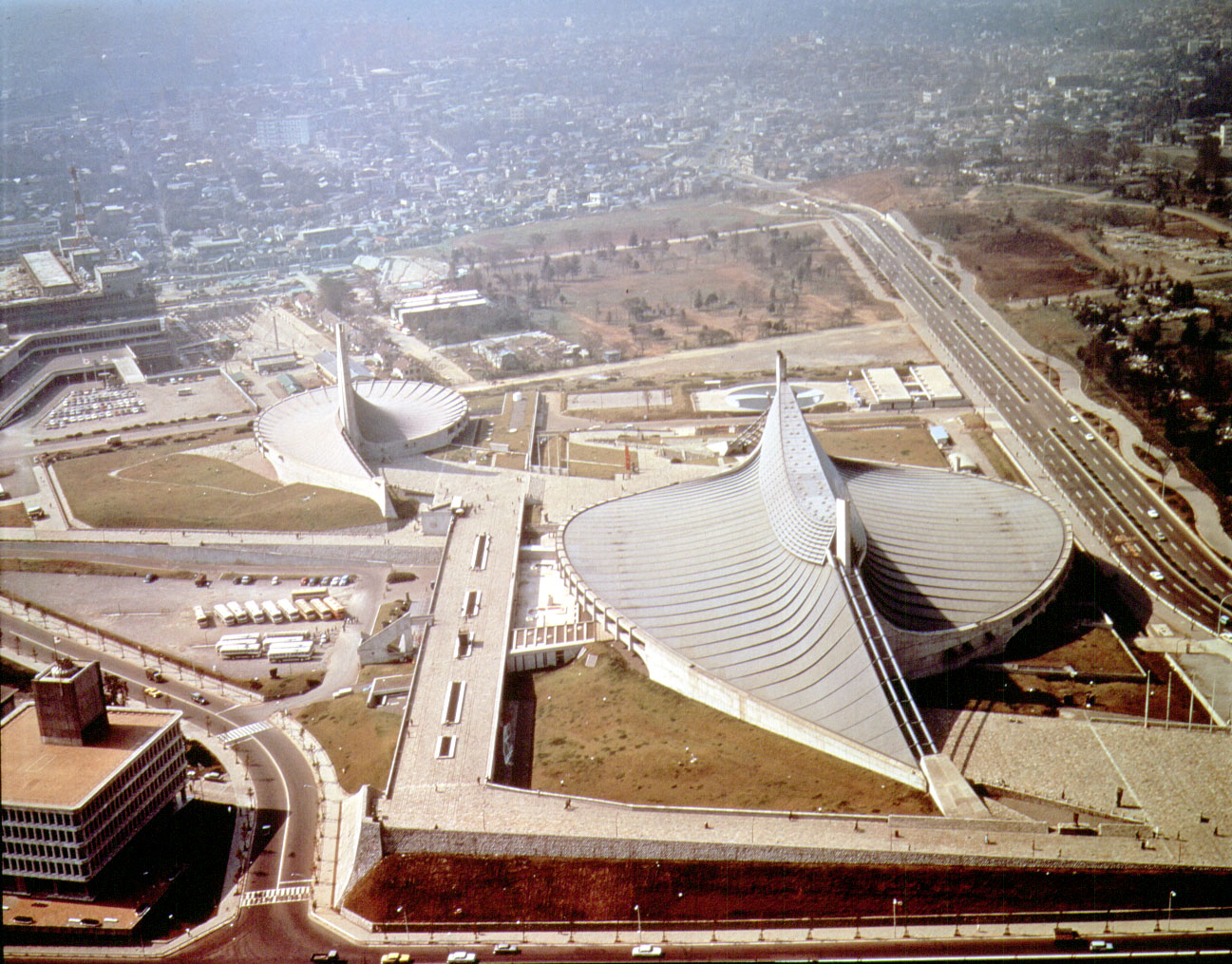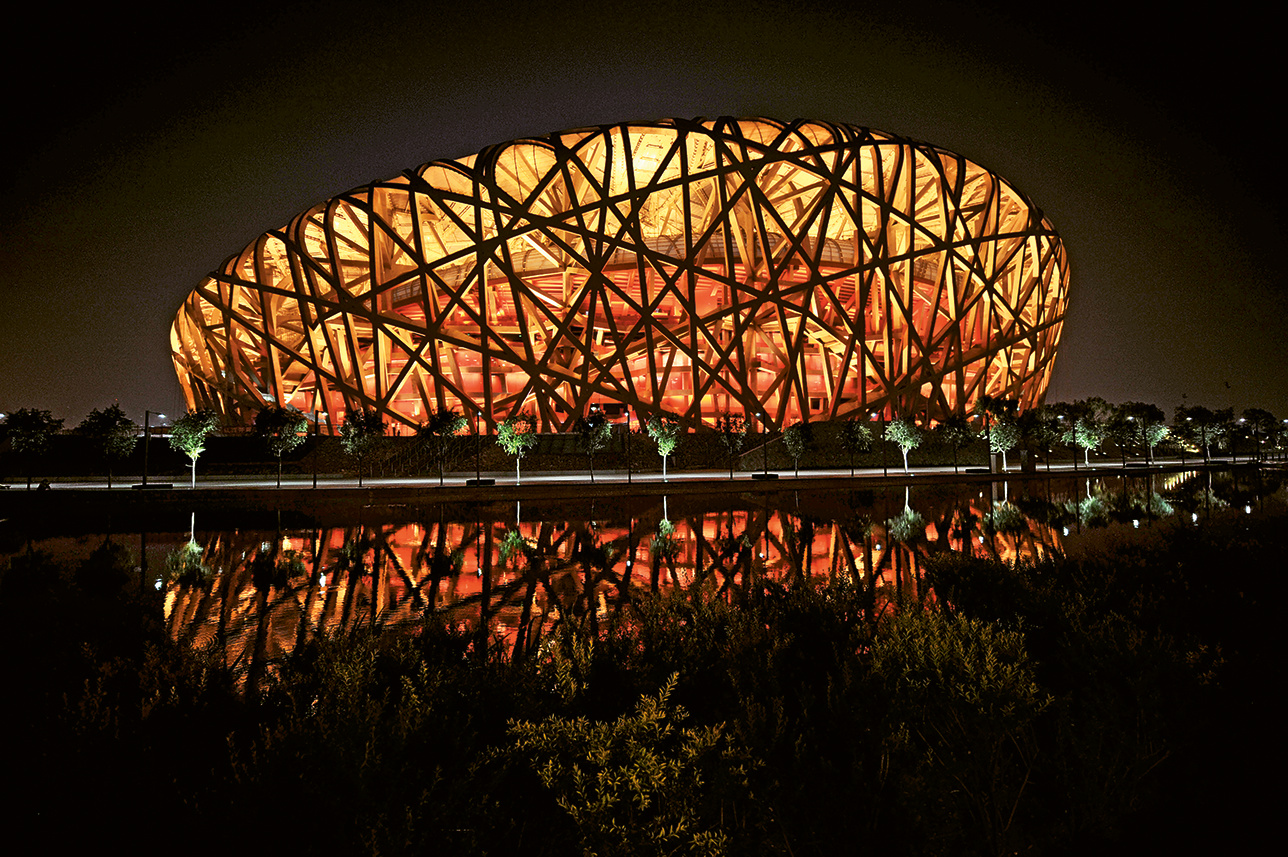| ALL |
|
STADIUM
| OVERVIEW |
|
| |
Today, major cities heatedly debate the need for new structures for their most prominent inhabitants: their athletic teams. As sports have become primary generators of revenue for cities, the cutting-edge stadium has become an earmark of a city on the move. Hellmuth, Obata, and Kassabaum, Inc., Sports Facilities Group (HOK) has been the trendsetter in contemporary stadium design since 1983. With 1400 architects, the company now is building consistently enough to create divisions based around different sports, including hockey, basketball, baseball, football, and soccer. HOK, based inKansas City, Missouri, is responsible for Oriole Park at Camden Yards, which defined a return in baseball to traditional ballparks. Perfectly suited to alternative agenda in the postmodern era, contemporary designers must walk careful lines between tradition and cutting-edge enhancements to the sports spectacle.
The first modern stadium appeared in Victoria, Britain, in the late 1890s. However, there was obviously a precedent even before this: The ancestral prototypes for modern facilities are the stadiums and hippodromes of ancient Greece. Here, Olympic and other sporting contests were staged, starting in the eighth century B.c. Greek stadiums, which could be found in many larger cities, were laid out in a U shape, with the straight end forming the starting line for races. Some also followed the model of theaters and were built into hillsides. Other forms during this early history included Roman amphitheaters and circuses.
In the late 1800s, designers began experimenting with more modern facilities, although they often relied on classical models. Ballparks for the nation’s most popular sport, baseball, took shape in many cities. In the early 1900s, the ballparks in many cities were used separately by major-league players and Negroleague players. From the era of the smaller ballpark, the next epoch emerged in the form of great stadiums, such as New York’s Yankee Stadium (1923), Philadelphia’s Shibe Park (1909), Chicago’s Wrigley Field (1926) and Comiskey Park (1910), and Boston’s Fenway Park (1912), to name just a few. The forms that today are called stadiums, ballparks, or sports facilities would not appear until the 1940s. After World War II, a new wave of stadium building shifted to multipurpose facilities with partial roofs. The Oakland Coliseum, Shea Stadium, and others were often located in suburban areas and surrounded by acres of car parking. In addition to baseball, such stadiums could be used for football and public gatherings, such as concerts.
The multipurpose form of stadium had its origins in the enclosed dome. The originator of this form was the Houston Astrodome, which opened in 1964. Judge Roy Hofheinz, with the quirky idea of combining attending a sports event with going to a cocktail party, designed the dome around the idea of sky-boxes. These private boxes allowed highpaying clients to attend games without interacting with other fans. A young pitcher for the Houston Astros bounded into the stadium in April 1965, taking in the miracles of the dome: air conditioning, grass growing indoors (artificial turf would be laid in 1966), the translucent roof (greenhouse by day, a planetarium by night), and seating for 66,000.
Many traditionalists viewed attending baseball in airconditioned splendor as a travesty. The players, however, were most critical of the roof, the panels of which created a glare that made it impossible to see the ball. The league tried changing the color of the ball, but to no avail. The team painted over the roof panels, banishing the sun and killing the grass—Tifway 419 Bermuda, which had been specially developed by scientists in Georgia. For the rest of the season, the Astros simply painted over the dead grass. Following the season, Monsanto’s new artificial turf, renamed AstroTurf, was installed. By 1973, five more stadiums would have synthetic surfaces, and many others would follow.
Other domes would follow, including the Louisiana Superdome, the largest dome when it was built in 1975, with a seating capacity of 76,800. Although traditionalists would wage war against domes and artificial turf, there was practical value to the controlledenvironment. Particularly when professional sports became more concerned with moneymaking, these technologies reduced the games’ dependence on weather and made these events more appealing for family and business groups. The effort to reconcile these needs led to some significant innovations, including the retractable domed roof, which was first installed in the Toronto Skydome, designed by Canadian architects Rod Robbie and Michael Allen in 1989. As a site for concerts and other sports events, including Canadian Football League games, in addition to baseball, this stadium featured movable lower stands and a retractable AstroTurf surface that permits a baseball-to-football conversion in 12 hours’ time. Large, domed sports stadiums continue to be built around the world, including Milwaukee’s Miller Park (2001, HKS, Inc., Dallas; NBBJ of Los Angeles; and others) and the Osaka Dome (1997, Nikken Sekkei). From 1965, when the Houston Astrodome was opened, to 2000, nearly 30 significant domed sports stadiums were built, mostly in cities in the United States, Canada, and Japan. Importantly, several domed stadiums were built as part of a host city’s preparations for the Olympic Games; these include the Amsterdam Arena (1996) and Paris architect Roger Tallibert’s Le Stade Olympique (1976). The domes have fueled a return to the more traditional model of stadiums designed in the early 1900s. Clearly, many communities now idealize the ballparks that predated Yankee Stadium. The contemporary version of this early baseball park, however, is quite different in scale and amenities.
Many late 20th-century stadium projects have followed the 1992 model of Oriole Park at Camden Yards (HOK Sport, Kansas City, Mo.) in Baltimore and the new Comiskey Park, designed by Osborn Engineering Company in Chicago, as well as stadiums in Denver and Cleveland. Returning to the one-dimensional parks and often to natural bluegrass surfaces, these forms combine modern convenience with nostalgic detail. The postmodern fusion has been a universal success, functioning to attract entire families to baseball games and revitalizing aging urban centers. Many stadiums have included amusement and shopping facilities within the park for those less enamored with sports.
Twentieth-century stadiums often accommodate more than one sport and, thus, prolong their function and profitability beyond a single sport season that lasts a few months. During the last two decades of the 20th century, many major North American cities built sports stadiums for their home teams in hockey, basketball, and football. Among more recent American sports arenas, the Pepsi Center in Denver was designed in 1999 by HOK for the city’s professional hockey and basketball teams and features luxury suites and a300-seat restaurant overlooking the sports field.
The 20th-century stadium as a prominent and innovative building type has served more than just professional sports. As gathering places for national political events or other large-scale public or state-sponsored occasions, North Korea’s May Day Stadium (capacity 150,000), Iran’s National Stadium (capacity 128,000), and Pirouzi (capacity 128,000) represent the world’s largest domed structures. Others include City Stadium Jornalista Mário Filho in Brazil (capacity 120,000) and East Bengal in India (capacity 120,000).
BRIAN BLACK
Sennott R.S. Encyclopedia of twentieth century architecture, Vol.3. Fitzroy Dearborn., 2005. |
| |
|
| |
|
| |
|
| |
|
| |
|
| |
|
| |
|
| GALLERY |
|
| |
,Shizuoka, JAPAN, KENZO TANGE.jpeg) |
| |
1957, Shizuoka Gymnasium(Former Shizuoka Convention Hall),Shizuoka, JAPAN, KENZO TANGE |
| |
|
| |
 |
| |
1959, Ingalls Hockey Rink, Yale University, New Haven, USA, EERO SAARINEN |
| |
|
| |
 |
| |
1963, Yoyogi National Gymnasium, TOKYO, JAPAN, KENZO TANGE |
| |
|
| |
 |
| |
1984, Fujisawa Municipal Gymnasium, Kanagawa, JAPAN, FUMIHIKO MAKI |
| |
|
| |
 |
| |
1990, Tokyo Metropolitan Gymnasium, Tokyo, JAPAN, FUMIHIKO MAKI |
| |
|
| |
 |
| |
2002-2005, Allianz Arena, München-Fröttmaning, Germany, HERZOG & DE MEURON |
| |
|
| |
 |
| |
2003–2008, National Stadium Main Stadium for the 2008 Olympic Games, Beijing, China, HERZOG & DE MEURON |
| |
|
| |
 |
| |
2007, Wembley Stadium, London, UK, NORMAN FOSTER |
| |
|
| |
 |
| |
2015, NOU CAMP NOU, BARCELONA, SPAIN, RICARDO BOFILL |
| |
|
| |
|
| |
|
| |
|
| |
|
| |
|
| |
|
| |
|
| ARCHITECTS |
|
| |
FOSTER, NORMAN
HERZOG & DE MEURON
MAKI, FUMIHIKO
PIANO, RENZO
TANGE, KENZO |
| |
|
| |
|
| |
|
| |
|
| |
|
| |
|
| |
|
| BUILDINGS |
|
| |
1957, Shizuoka Gymnasium(Former Shizuoka Convention Hall),Shizuoka, JAPAN, KENZO TANGE |
| |
|
| |
1959, Ingalls Hockey Rink, Yale University,
New Haven, USA, EERO SAARINEN |
| |
|
| |
1963, Yoyogi National Gymnasium, TOKYO, JAPAN, KENZO TANGE |
| |
|
| |
1964, Kagawa Prefecture Gymnasium, Kagawa, JAPAN, KENZO TANGE |
| |
|
| |
1976-1978, Public gymnasium, Balerna, Switzerland, MARIO BOTTA |
| |
|
| |
1984, Fujisawa Municipal Gymnasium, Kanagawa, JAPAN, FUMIHIKO MAKI |
| |
|
| |
1987-1990, SAN NICOLA FOOTBALL STADIUM, BARI, ITALY, RENZO PIANO |
| |
|
| |
1989, Singapore Indoor Stadium, Singapore, KENZO TANGE |
| |
|
| |
1990, Tokyo Metropolitan Gymnasium, Tokyo, JAPAN, FUMIHIKO MAKI |
| |
|
| |
2002-2005, Allianz Arena,
München-Fröttmaning, Germany, HERZOG & DE MEURON |
| |
|
| |
2003–2008, National Stadium Main Stadium
for the 2008 Olympic Games, Beijing, China, HERZOG & DE MEURON |
| |
|
| |
2007, Wembley Stadium, London, UK, NORMAN FOSTER |
| |
|
| |
2013-2015, Nouveau Stade de Bordeaux,
Bordeaux, France, HERZOG & DE MEURON |
| |
|
| |
2015, NOU CAMP NOU, BARCELONA, SPAIN, RICARDO BOFILL |
| |
|
| |
|
| |
|
| |
|
| |
|
| |
|
| MORE |
|
| |
FURTHER READING
Benson, Michael, Ballparks of North America: A Comprehensive Historical Reference to Baseball Grounds, Yards, and Stadiums, 1845 to Present, Jefferson, North Carolina: McFarland, 1989
Cagan, Joanna, and Neil De Mause, Field of Schemes: How the Great Stadium Swindle Turns Public Money into Private Profit, New York: Common Courage Press, 1998
John, Geraint, and Rod Sheard, Stadia: A Design and Development Guide, Oxford and Boston: Butterworth-Architecture, 1994; 2nd edition, Oxford and Boston: Architectural Press, 1997
Klobuchar, Amy, Uncovering the Dome: Was the Public Interest Served in Minnesota’s 10-Year Political Brawl over the Metrodome? Minneapolis, Minnesota: Bolger, 1982
Kuklick, Bruce, To Every Thing a Season: Shibe Park and Urban Philadelphia, 1909– 1976, Princeton, New Jersey: Princeton University Press, 1991
Smith, Ron, and Kevin Belford, Ballpark Book, St. Louis, Missouri: Sporting News, 2000
Valavanes, Panos, Hysplex: The Starting Mechanism in Ancient Stadia: A Contribution to Ancient Greek Technology, Berkeley: University of California Press, 1999
|
| |
|
|

